I know we're nowhere near Iceland yet, but I have to tell you about hákarl. It's made by cleaning and beheading a Greenland shark (this particular shark, by the way, can't be eaten fresh since its flesh is full of neurotoxins), which is then placed into a shallow hole in coarse sand. The dead shark is then covered with more sand and gravel and topped with heavy stones, which presses the fluids out of the meat. The shark rots—I mean ferments—in this hole for six to 12 weeks, then it is cut into strips and hung up to dry for a few more months. The preparers then scrape off the brown crust that forms on the meat and cut it up into chunks. Then they give it to unsuspecting tourists and have a good laugh about it. I am told that hákarl tastes like ammonia and spoiled fish. I am prepared to accept that account, since I will not ever be tasting it myself.
Why am I telling you this? Because this week we are in the Faroe Islands, where they also have a taste for fermented meat. On the Faroe Islands they eat a kind of fermented sheep, known as skærpekød. Skærpekød is made from cured, wind-dried mutton which is left to ferment in a shed for five to nine months. When it's done it tastes something like mutton smothered in blue cheese but is about a million times stronger than any blue cheese you've ever had. Or so I've heard. Because like hákarl, skærpekød is not something I would ever try. I am adventurous, but I am also not afraid to admit my limitations.
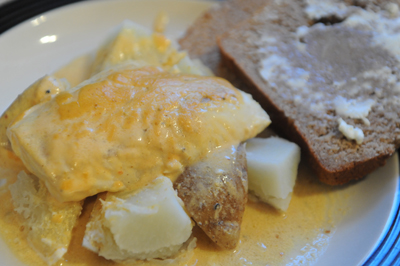 |
| This is not Skærpekød. Or hákarl. |
So this week I did not make skærpekød. Sorry. And I had a bear of a time finding other recipes, too.
 |
| Mykinesbygd, Vága, Faroe Islands. Photo Credit: Alessio Mesiano |
There is of course more to the Faroes than its skærpekød. Located about halfway between Norway and Iceland (which is probably where they got the idea for skærpekød), the Faroe Islands are a self-governing country under the sovereignty of the Kingdom of Denmark. The islands were originally settled by Norse Vikings in about 800 AD, though there may have been people there much earlier than that. The modern parliament of this little nation actually dates all the way back to the Viking times and is probably one of the oldest parliaments in the world.
 |
The Faroe Islands also have their own language, which is sadly not included in any of the online translation services. So I couldn't translate Faroese recipes, either, and instead had to settle on the sole main dish I could locate in English:
Sunfrid Jacobsen’s Fish Casserole
(From expatlaureen.com)
- 2 lbs cod
- 3 tbsp oil
- 1 cup heavy cream
- 1/3 cup prepared mustard
- 1/4 cup ketchup
- 1 tsp curry powder
- 1 tsp white vinegar
Now this really isn't a fish casserole—it is just fish baked in a creamy sauce. It is also very easy to prepare, which is always a plus for me.
I also made a rye bread, which I admit is a bit of a stretch. I did find a recipe for a Faroese rye bread but of course it was in Faroese, which I could not translate. So I settled on this Icelandic recipe, which I'm betting is similar to the one they make on the Faroes, but someone please correct me if I'm wrong:
Rúgbrauð (Dark Rye Bread)
(From the Whole Food Diary)
- 1 1/2 cups milk or skimmed milk
- 1/4 cups golden syrup*
- 2 1/2 tsp active dry yeast
- 2 1/2 tbsp water
- 2/3 tsp salt
- 3 1/4 cup rye flour
- 1 1/8 cup whole grain flour
- 3/4 cup all-purpose flour
* Golden syrup can be found in the British foods section of your local grocery store. Don't try to substitute corn syrup or maple, it's not the same thing.
And then I found this dessert recipe in a book called "A World of Cake
Hazelnut Oatcake
For the cake:
- 1 1/4 cups water
- 1 1/2 cups rolled oats
- 1 1/3 cups all-purpose flour
- 1 tsp ground cardamom
- 1/2 tsp caraway seeds
- 1 tsp baking powder
- 1/2 tsp salt
- 1 1/2 cups light brown sugar
- 1/2 cup granulated sugar
- 1 cup unsalted butter
- 2 eggs
- 3/4 cup chopped hazelnuts
- A small handful of whole hazelnuts
- A small handful of whole raspberries
For the vanilla sauce:
- 1/2 cup light brown sugar
- 1 tbsp all-purpose flour
- 1 pinch ground cinnamon
- 1 egg
- 2 tbsp butter, melted
- 1 1/4 cups whole milk
- 1 pinch salt
- 1 tbsp vanilla extract
OK here goes:
First bake the bread:
Put the milk and the syrup into a pot and heat over a low flame. Do not boil, just heat it to about the temperature of hot chocolate.
Dissolve the yeast in the water, then add the salt and stir. Let sit for a few minutes. Meanwhile, put the flours in a large bowl and gradually add the milk mixture and the water. Combine until you get a dough. Knead on a floured surface then transfer to a greased loaf pan and let rise until doubled in size. Bake at 350 degrees for 1 to 2 hours or until the top is golden (this only took about 45 minutes in my oven).
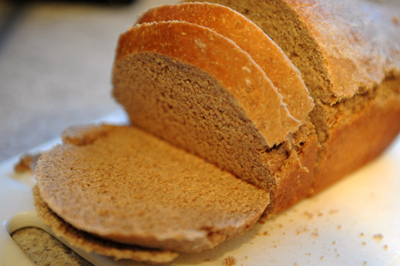 |
Preheat your oven to 350 degrees. While it's warming up, grease a 9-inch cake pan with butter. Line the pan with parchment paper and set aside.
Now boil the water and pour it over the oats. Let sit while you mix the flour together with the cardamom, caraway seeds, baking powder and salt. In yet another bowl, combine the sugars and the melted butter. Add the eggs one at a time and beat until well incorporated, then gradually add the flower and spice mix.
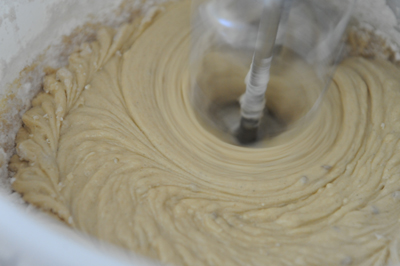 |
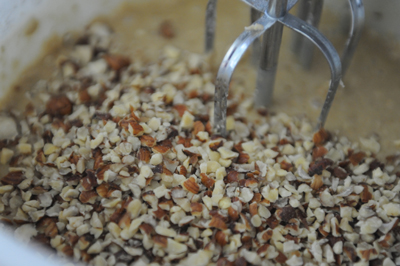 |
While the cake is baking, make the vanilla sauce. In a heavy saucepan, combine the brown sugar, flour and cinnamon with the egg, melted butter, whole milk and salt. Heat over a medium flame, whisking constantly. Don't let it boil because it will get grainy (sadly, that's what happened to mine). When the sauce has thickened (10 to 12 minutes later), add the vanilla extract.
Spread the vanilla sauce over the top of the cooled cake, then top with the raspberries and whole hazelnuts.
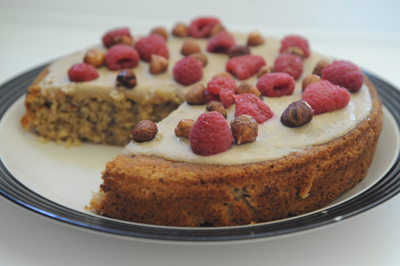 |
Preheat your oven to 350 degrees. Rinse the cod and season with salt and pepper. Transfer to an ovenproof baking dish.
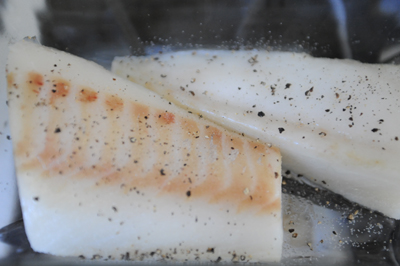 |
 |
 |
So that was it. Honestly, all that stuff about the skærpekød was more interesting than the meal itself, but there you go.
Next week: Fiji
For printable versions of this week's recipes:











A note on hákarl: It's no joke. Lots of Icelanders like it and some eat it like a snack. We are, however, aware that it's a highly acquired taste and therefore it is used to gross out tourists. By the way, it does stink like ammonia, but the flavour is milder than this would tend to suggest. It tastes like strong cheese with fishy undertones but has a blubbery texture that can turn the stomach.
ReplyDeleteIf you haven't already, take a look at this: http://www.youtube.com/watch?v=-xhfJRdwHnU . The shark bit begins around the 2 minute mark.
I really do think of myself as being pretty adventurous, but the thought of eating hákarl makes me shudder. Which is funny really because I love cheese, and cheese is basically just fermented milk so I don't really know why fermented meat ought to be any different. It's all animal products ... but still ...
ReplyDeleteOh man, thanks for that link! I'm still laughing. Hey, Gordon Ramsay couldn't stomach it so I guess I don't feel so unadventurous anymore. Haha!
ReplyDelete